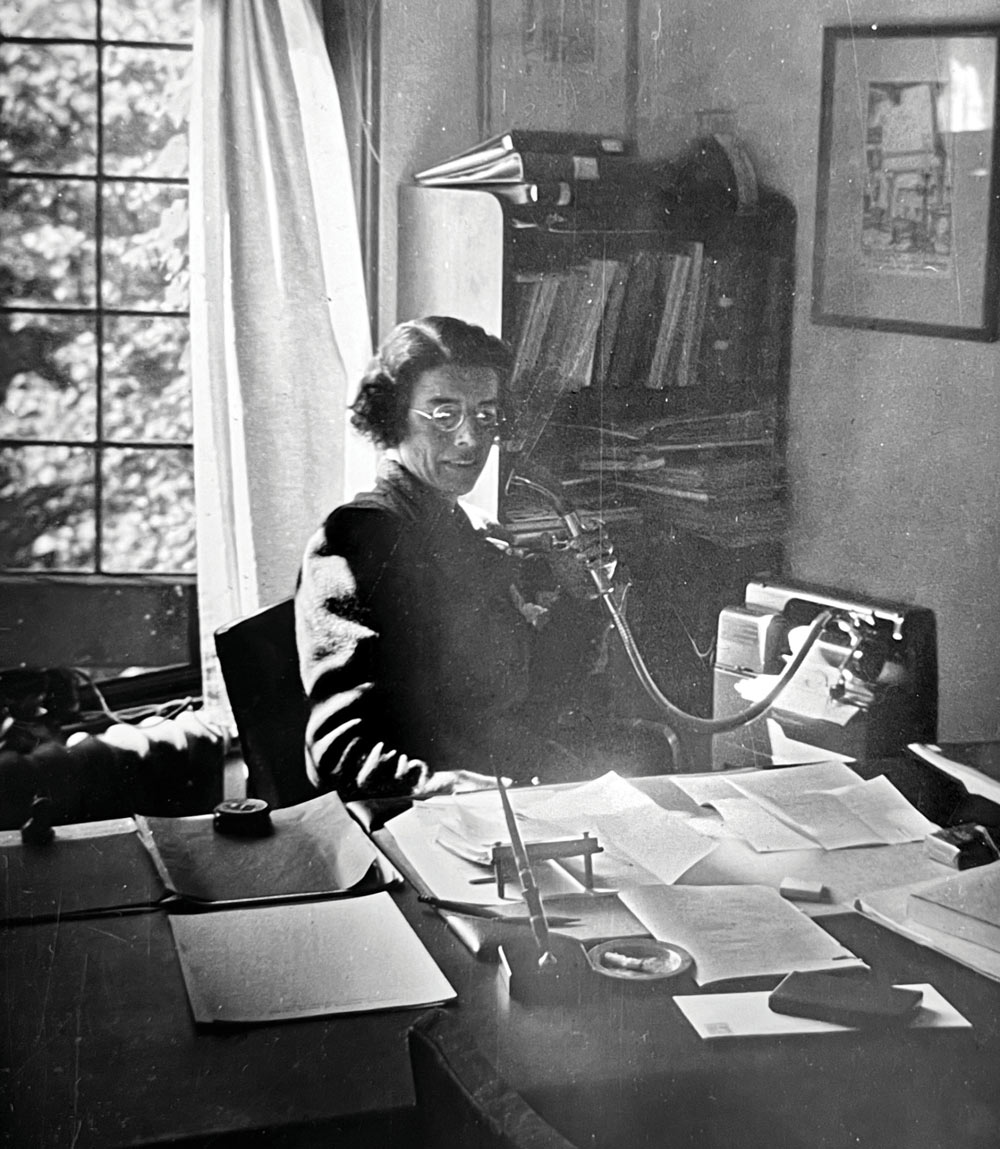Expanding the Appeal of Alumnae House

Her joyful extroversion served her well as the Executive Secretary of the AAVC from 1936–1969. During that time, she lived at Alumnae House in what came to be known as “Club 15.” Room 15 was a gathering place. Indeed, wherever Gert went became a gathering place. In a tribute published in the March 1990 issue of the Vassar Quarterly after her death, Susan Getman Abernethy ’63, who had served as Executive Director from 1972–1975, noted that “Gert’s room on the second-floor corner, above the Pub, was where President Sarah Gibson Blanding and her assistant Florence Wislocki ’26 came to relax over Bridge. Issues were aired, information exchanged, lives caught up on, and laughter shared.”
To the many alumnae who came though the College during her time as Executive Secretary, Gert was Alumnae House. As Susan recalled, Gert’s table in the Alumnae House dining room was the center of the action. “Gert sat with her back to the back-terrace window in order to see everyone who entered the room,” she said. “She waved to or got up and hugged alumnae and their spouses and children as soon as she saw them. Everyone across the generations was made to feel welcomed home to Vassar.”
Gert had been hell-bent on changing the perception of Alumnae House from a stodgy place for old ladies to a space where everyone, including current students, would feel welcome. As part of that same tribute in the Vassar Quarterly, Franny Prindle Taft ’42, former AAVC President, noted that, “Going to Alumnae House as undergraduates was one of Gert’s innovations. Before her arrival, it was exclusively for alumnae or for students accompanied by their parents.”
To make the House more attractive to students, Gert urged the College to create a path up from Joss so students could more easily traverse the hill. She even got a beer license that allowed students to enjoy refreshments up at the House—the first step toward creating the Pub. As Franny said, “Gertrude knew full well that if the Alumnae Association seemed like a ‘swell’ place to be, she would be cultivating enthusiastic future supporters. It was insight and instincts like these that Gert brought to the job. Everyone had a wonderful time, building friendships and loyalties.”
Gert’s welcoming presence was especially needed during WWII, when the College, having over-admitted the entering class, asked her to house the overflow at Alumnae House. Constance Dimock Ellis ’38, a Vassar English professor (and later, trustee), recalled that “Gert’s interest in the students and success of their life at the Alumnae House was instant and genuine. She got to know many of them well, and some remained her good friends for years. The student body as a whole, constrained by gas rationing and the unavoidable absence of many young men of their age, soon discovered that Alumnae House was a delightful place to relax, eat, drink, and entertain each other and [as many] of their friends as could manage to get to Poughkeepsie. They crowded the Pub, the terraces, and the living room. Being welcome at the House made a real difference in the quality of undergraduate life at Vassar during the war, and it was Gert’s sympathy and imagination that made it possible.”
According to the Vassar Encyclopedia, the Alumnae Association membership grew from 5,600 to 22,000, and the Alumnae Fund mushroomed from about $10,000 to over $1,000,000 during her tenure. Yet her legacy reflects much more than a growth in alum participation or fund-raising dollars. It was the nature of her warmth, wisdom, and vision that made the Alumnae House a hub for visiting alumnae and their families—and especially a gathering place for students.